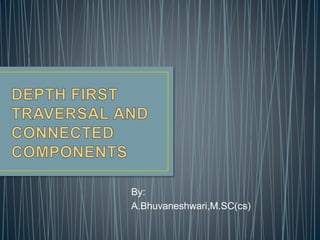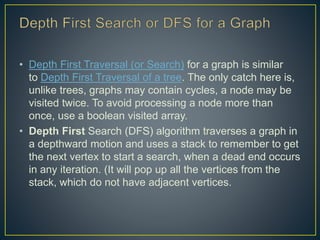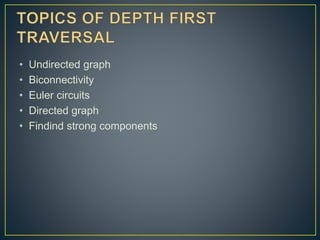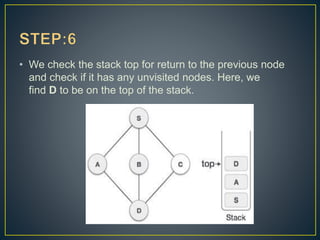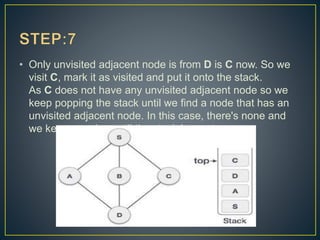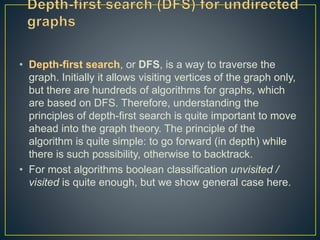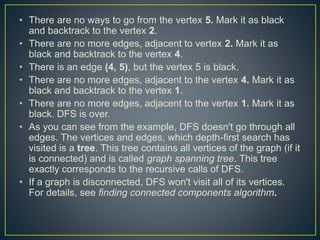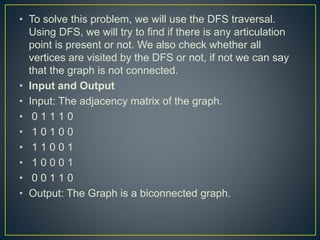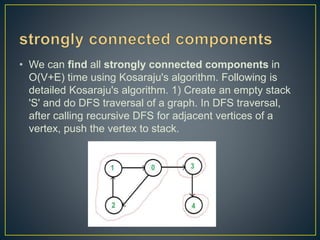The document discusses depth-first search (DFS) algorithms for graphs. It explains that DFS traverses a graph in a depthward motion using a stack. It explores all adjacent unvisited nodes, marks them as visited, and pushes them onto the stack before backtracking. The document provides pseudocode for DFS and an example of applying it to a graph. It also discusses uses of DFS in finding connected components, biconnectivity, and strongly connected components in graphs.
